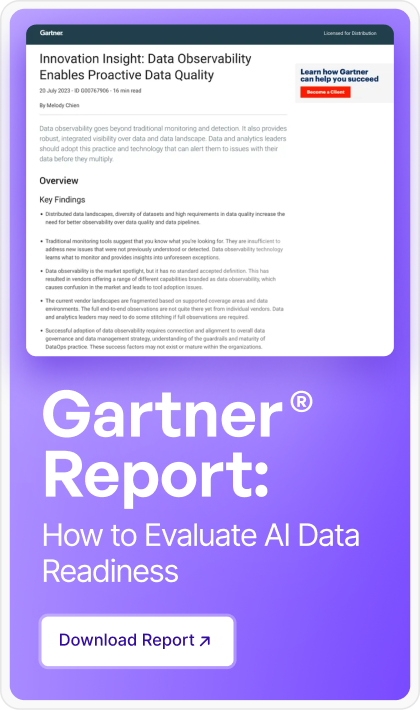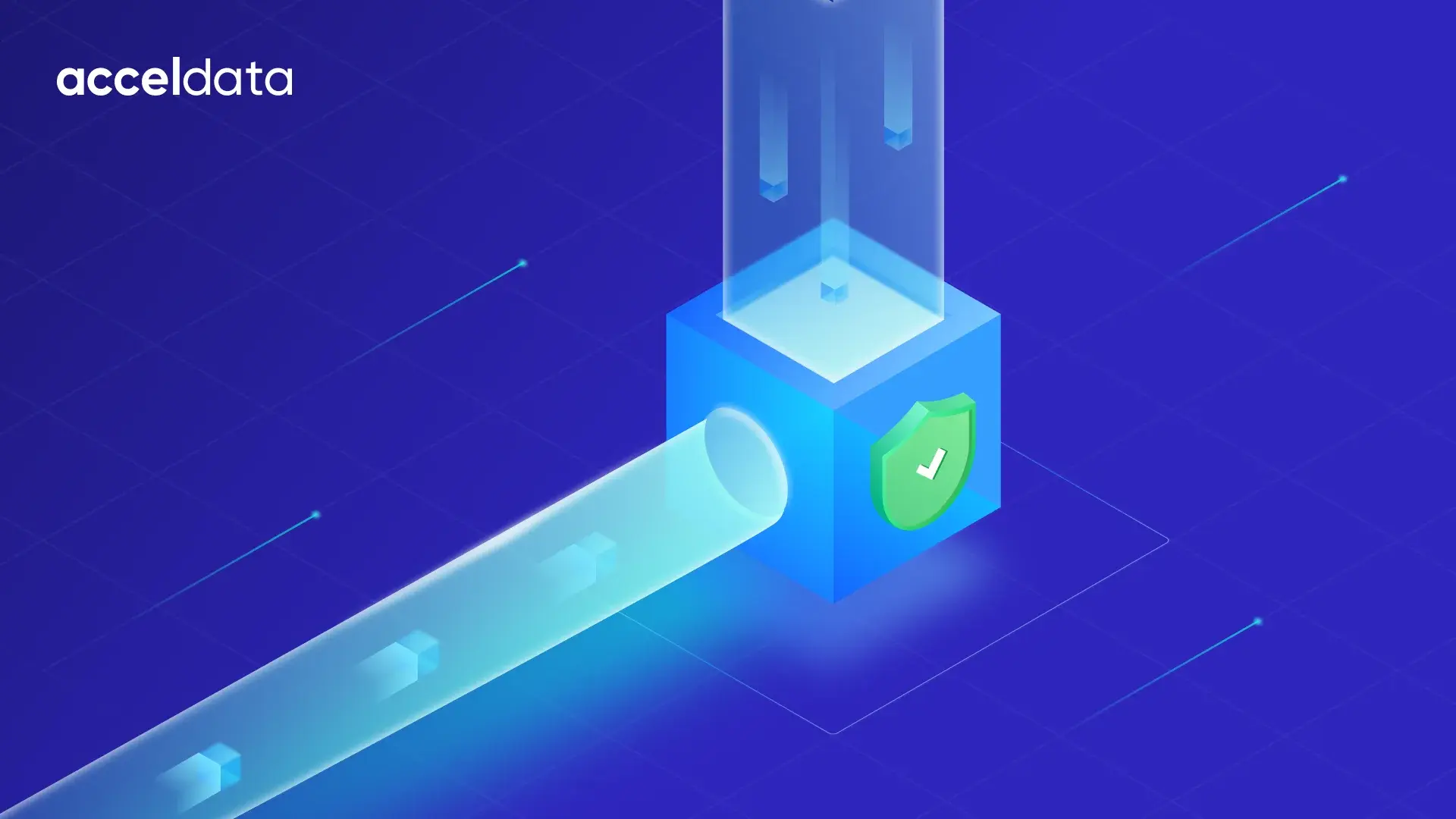The global data volume is projected to reach 175 zettabytes by 2025, a significant increase from 33 zettabytes in 2018, driven by the rapid growth of IoT devices, cloud computing, and digital transformation.
This surge presents a key challenge: turning large amounts of data into actionable insights. Without robust systems to manage this influx, companies risk data overload.
Data pipelines offer a solution by automating data movement, processing, and transformation, helping businesses stay ahead of the competitive curve.
Uber processes millions of rides and transactions every minute through seamless data pipelines, enabling real-time insights. This technology isn’t just for tech giants; retail chains, healthcare providers, and businesses across industries rely on data pipelines to maintain competitiveness.
This article explores what data pipelines are, their key components, and their importance, along with best practices and emerging trends for optimizing data transformation techniques.
What Are Data Pipelines?
Data pipeline is a system that automates the movement and transformation of raw data from multiple sources to a designated destination, where it can be analyzed and used for business insights.
Imagine an assembly line in a factory where each station has a specific task. Raw materials are processed and refined at each step as they progress through the line, ultimately resulting in a finished product. Similarly, data pipeline processes raw data through various stages, ensuring it's clean, structured, and ready for use.
Spotify uses data pipelines to process millions of song streams, user interactions, and playlists every second. This data is transformed to offer personalized music recommendations, identify trends, and improve user experiences.
Key Components of Data Pipelines
Building effective data pipelines requires a grasp of their key components, each crucial for transforming raw data into actionable insights while ensuring smooth, secure, and accurate data flow.
The following components play a vital role in building an effective data pipeline:
- Data sources: These are the starting points, ranging from databases and APIs to IoT devices. For example, retail chains gather data from various channels, creating a comprehensive view that helps optimize stock and marketing.
- Data ingestion: This step involves pulling data from multiple sources using data ingestion tools. Companies may employ batch processing for scheduled tasks or real-time streaming for instant data capture. Live sports analytics platforms rely on continuous ingestion to provide real-time game statistics, enabling broadcasters and fans to make quick decisions.
- Data processing: In this stage, raw data is cleaned, normalized, and transformed into a usable format. For instance, a global logistics company standardizes tracking data from various suppliers, ensuring precise shipment monitoring and faster resolution of delays.
- Data destination: Processed data is stored in data warehouses or lakes for analysis. Airbnb utilizes big data to adjust prices dynamically, provide personalized recommendations, and maximize occupancy rates across listings, thus boosting user experience and revenue.
- Workflow orchestration: Tools such as Apache Airflow manage the sequence of tasks, ensuring seamless data processing. Fast-growing e-commerce brands rely on this to track campaign performance uniformly across platforms, enabling data-driven optimization.
- Data governance and security: These ensure data reliability, compliance, and security. Financial institutions implement encryption and access control to safeguard customer data, thereby preventing breaches that could lead to significant financial and legal repercussions.
Advantages of Data Pipelines in Modern Organizations
Efficient data pipelines offer more than just streamlined data flow; they bring tangible benefits that can transform business operations.
From automating processes to enabling real-time insights, here’s how data pipelines provide companies with a competitive edge:
- Automation and efficiency: Data pipeline automation tools such as Apache NiFi and Talend reduce manual intervention, streamlining the data flow. For instance, FedEx automates its logistics data pipeline, tracking millions of packages worldwide without manual updates, thus ensuring precise delivery information.
- Real-time data processing: Businesses that process data in real time can make instantaneous decisions. For example, a stock trading platform processes transaction data in real time to detect anomalies and prevent fraud within seconds.
- Consolidation of data: Data pipelines bring together data from multiple sources, ensuring consistency. A hospital may integrate data from electronic health records, lab tests, and wearable devices to provide a comprehensive patient overview.
- Scalability and flexibility: Pipelines smoothly adapt to rising data volumes without any hiccups. Amazon’s data pipelines scale up to manage the extra load when the e-commerce giant experiences a surge in holiday orders.
Data Pipelines vs. ETL: Key Differences Explained
Traditional ETL focuses on batch processing of structured data, while modern data pipelines handle both real-time and batch data, offering more versatility for diverse data needs.
Here are some of the key differences between the two:
Characteristics of Modern Data Pipelines
Modern data pipelines need to do more than just move data—they must be scalable, adaptable, and resilient.
Here are the vital characteristics that make them indispensable for businesses seeking to handle data efficiently and reliably:
- Scalable and elastic processing: The ability to scale up or down based on demand is crucial. For example, Netflix’s Suro dynamically scales its data processing during peak hours, such as when new seasons of popular shows are released. This ensures that millions of viewers can stream content simultaneously without interruptions, thanks to robust data pipelines that effortlessly manage surges in demand.
- Cloud agility: Cloud-native pipelines facilitate seamless integration with cloud services, making data processing more efficient and flexible. Shopify, a leading e-commerce platform, leverages cloud-native pipelines to manage sales data across thousands of online stores worldwide. This allows Shopify to handle regional data processing without the need for setting up physical servers in multiple locations, providing a scalable and cost-effective solution for its clients.
- High availability and resilience: Pipelines must remain operational even during system failures to ensure business continuity. For instance, Mastercard relies on resilient data pipelines to process millions of transactions globally in real time.
Best Practices for Building and Optimizing Data Pipelines
Businesses need more than a basic setup to build effective data pipelines. By adopting best practices, they can ensure that pipelines remain reliable, scalable, and efficient.
Here are key strategies to optimize data pipelines and boost performance:
- Automate data ingestion and transformation: Utilizing data pipeline automation and data ingestion tools minimizes errors and accelerates data handling. For example, tools such as Apache NiFi and Talend ensure efficient data ingestion across various formats and sources. Spotify automates the ingestion and transformation of user interaction data to deliver personalized music recommendations in real time, scaling seamlessly with millions of daily users.
- Maintain data integrity: Implement checks at every stage to catch discrepancies early. A financial institution may validate transaction data throughout the pipeline to prevent errors from affecting customer balances. For instance, PayPal uses real-time data validation to ensure that transaction data is accurate, preventing issues such as double billing or misapplied charges.
- Continuous data monitoring and auditing: Regular monitoring helps detect issues before they become problems. Deploying monitoring solutions such as Prometheus ensures pipelines run smoothly. Alerts can trigger immediate action if a bottleneck is detected. Amazon Web Services (AWS) employs continuous monitoring across its data services to quickly identify and resolve performance issues, ensuring high availability for its global customer base.
- Design for scalability: Build scalable pipelines that can handle growing data volumes without degrading performance. Google Cloud's BigQuery is designed to scale automatically when businesses face spikes in data processing demands. Retailers using BigQuery can effortlessly handle sudden surges in sales data during events such as Black Friday, enabling real-time analytics without any disruption.
- Implement data governance and security: Ensure robust access controls, encryption, and compliance measures to protect sensitive data. For instance, JPMorgan Chase incorporates data governance frameworks to secure customer information across its pipelines, meeting strict regulatory requirements and preventing unauthorized access.
- Leverage cloud-native tools for flexibility: Cloud-native tools allow pipelines to adapt quickly to new data sources or processing requirements. For example, Moderna uses cloud-native data infrastructure on AWS to process and analyze massive volumes of genomic data. By leveraging services such as Amazon S3, Redshift, and Lambda, Moderna can seamlessly scale its data analytics, especially during high-demand periods, such as vaccine development.
- Ensure proper data lineage and metadata management: Track the origin, transformation, and usage of data throughout the pipeline. LinkedIn uses data lineage to trace data from source to destination, ensuring that data scientists and engineers can identify, audit, and troubleshoot any anomalies in data flow efficiently.
- Implement redundancy and failover mechanisms: Design pipelines with redundancy to ensure they remain operational even if parts of the system fail. Visa’s global payment network employs robust redundancy and failover strategies to handle millions of transactions per second. Visa ensures continuous payment processing by utilizing multiple data centers and backup systems worldwide, even in the event of a localized failure. This approach allows it to maintain a 99.999% uptime, ensuring reliable and uninterrupted service for global merchants and consumers.
Overcoming Common Challenges in Data Pipeline Management
Data pipelines can transform how businesses handle and analyze information, but they come with their own set of challenges.
From integration issues to performance bottlenecks, here are common obstacles companies face and how they can be effectively addressed:
- Data silos and integration issues: Several organizations struggle with data being isolated across departments, making it difficult to gain a unified view. Data pipelines can integrate data from disparate systems, breaking down these silos. McDonald's aggregates data from franchise locations, centralizing it into a single platform. This enables it to analyze sales performance, customer preferences, and operational efficiency across all branches, providing actionable insights.
- Performance bottlenecks: Effective data pipelines must handle peak loads without delays. A well-optimized pipeline ensures all transactions, inventory updates, and customer interactions are processed smoothly, preventing slowdowns and ensuring that sales opportunities are not lost.
- Ensuring data quality: Poor data quality can lead to inaccurate insights and flawed decision-making. Continuous validation checks are essential to ensure only clean, accurate data flows through the pipeline. National Grid, a utility company, relies on data from smart meters to monitor energy usage. Regular data quality checks help prevent billing errors, ensuring customers are charged accurately and operations run efficiently.
- Latency in real-time data processing: Some businesses require immediate data processing to make quick decisions. For example, a financial trading platform such as Nasdaq relies on real-time data pipelines to execute trades. Even minor delays can lead to missed opportunities and significant financial losses. Companies can maintain a competitive edge in time-sensitive environments by optimizing data flow and reducing latency.
- Scalability and resource management: As businesses grow, so do their data processing needs. Scaling pipelines efficiently without overspending on resources can be challenging.
Streaming services such as Disney+ need to scale their data pipelines to handle spikes in viewership during new movie releases or popular show premieres.
Cloud-native solutions allow them to scale up processing power quickly and cost-effectively, ensuring a seamless viewing experience for millions of users worldwide.
Emerging Trends in Data Pipeline Technology
New technologies are transforming data pipelines, making them more scalable, efficient, and adaptable.
Here are the emerging trends driving this evolution:
- AI-driven data transformation: AI can predict data quality issues and automate corrections, making pipelines smarter and more efficient. Companies are increasingly deploying AI models to pre-process large datasets, ensuring they’re ready for real-time analytics.
- Real-time data observability: Tools that provide real-time observability allow businesses to detect and resolve issues before they disrupt operations. Netflix uses an observability platform to monitor data flow, enabling it to address latency or data accuracy problems proactively, ensuring seamless user experiences.
- Serverless data pipelines: The shift toward serverless architectures, such as Google Cloud Functions, results in scalable, cost-efficient data processing. Startups can leverage serverless pipelines to scale data operations without investing in extensive infrastructure, allowing them to grow flexibly as their data needs increase.
- Edge computing integration: Integrating edge computing into data pipelines is gaining traction as more data is being generated at the network edge (e.g., IoT devices). Tesla processes data from sensors directly at the vehicle level, reducing latency and improving real-time decision-making.
- Hybrid and multi-cloud pipelines: Businesses are increasingly adopting hybrid and multi-cloud environments to avoid vendor lock-in and enhance resilience. Dropbox uses multi-cloud data pipelines to store and process data across different cloud platforms, ensuring easy availability and flexibility to switch resources as needed.
Enhancing Data Pipelines with Acceldata
Enhancing data pipelines involves more than just moving data; it requires ensuring reliability, scalability, and real-time insights across diverse systems. Effective pipelines integrate data from multiple sources, maintain high data quality, and adapt to varying workloads seamlessly.
By implementing robust monitoring and automated quality checks, businesses can streamline their data flows, reduce disruptions, and gain faster, more accurate insights.
Acceldata’s data observability platform plays a key role in this process. It offers real-time monitoring, automated quality checks, and seamless integration with existing infrastructure, helping companies unify data sources and ensure consistency.
Businesses such as Phygtail Retail and PubMatic leverage Acceldata’s solutions to optimize their data operations, ensuring smooth and reliable data pipelines. Discover how Acceldata can transform your data management—book a demo today.
Summary
Data pipeline is the engine driving modern data pipeline architecture, transforming raw data into actionable insights. From automation to real-time processing, data pipelines enable businesses to stay agile, efficient, and competitive.
Data pipelines streamline operations across industries, whether it’s monitoring real-time inventory, tracking customer behavior, or enhancing predictive analytics. With Acceldata’s advanced platform, companies can elevate their data pipeline management, ensuring seamless data flow and quality.














.webp)
.webp)


